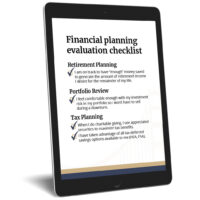
How to take an extended career break and still be fiscally responsible
If you’re a Gen X-er ready to embark on your Midlife Gap Year and take an extended break from your career, you may be wondering what the financial impact of this decision will be. You know you could use the time off to rest, rejuvenate, or pivot your career for your next chapter, but are unsure if it’s fiscally responsible—or even possible!
How to evaluate the financial impact of a career break
What will the financial impact be if you take time off from your career? Much like retirement planning, what you choose to do will inform the financial impact of your break.
Will you take a complete hiatus from your career or will it be possible for you to work part-time during your break? Travel abroad or stay home? How you choose to spend your Gap Year will determine the expenses involved and help you visualize the financial impact of your time off.
Here are a few common scenarios and the financial implications associated with each. We will begin with the most financially demanding option and work our way down to the most economical.
Common career break scenarios:
1. Taking a complete hiatus from work to travel
Let’s look at this scenario two ways: the first where you receive no income for your time away and the other where you receive full income, as you might if you are a business owner (assuming no change in annual revenue while you are away).
In both income scenarios, you will not only need to calculate what it will cost to keep your household up and running in your absence, but how much it will cost for you to enjoy your time away. The difference in each scenario will largely be in how much income you’ll need to generate to make this a reality.
In the “no income” scenario, you will be tasked with generating enough cash to cover your home mortgage, utilities, payments, insurances, and other non-negotiable expenses in addition to your travel. In the full income scenario, it’s likely your full income will be enough to maintain the status quo and only leave you with the excess financial liability of the travel.
Don’t forget to assess how your usual expenses may change:
Here are a few examples:
- Put gym or club memberships on hold while you are away.
- Suspend cable, internet, and/or home cleaning fees if your home will be unoccupied.
- Factor in a lower electric bill if your home will be vacant.
- Savings on commuting and other work expenses
All of these seemingly minor expenses can add up to help fund your extended career break.
2. Traveling abroad with partial pay
Perhaps you will decide to travel, but work on your trip to earn some extra cash. Teaching English in a foreign country or doing some work in your field remotely or along your route are examples many choose to explore. In this scenario, you will be able to factor in an income—albeit one that may be notably less than your usual income—but a source of funds nonetheless.
3. Staying home and continuing education
Individuals who use their Midlife Gap Year to pivot from one career chapter to another find it useful to fulfill course and certification requirements they know they will need when they transition into their new line of work. Of course, training and education can be costly, but staying at home helps to alleviate some of the financial burdens from the first two scenarios, which included travel.
4. Staying home to spend time with family
One of the most cost-efficient ways to spend your Midlife Gap Year is by staying home and living a similar lifestyle to the one you enjoy now. Of course, there are many variations of this option and each carries its own financial impact.
With more free time on your hands, you may inadvertently spend more than you typically would on leisure or entertainment activities (even though you might spend less on work-related expenses). For example, you might tee off with friends more frequently or enjoy more nights out. You may even decide to pepper some mini-vacations into your hiatus that will go above and beyond your usual spending habits.
Regardless of the options you choose, the important thing to remember is that planning ahead is key. You won’t want to end your Midlife Gap Year full of fiscal regret. Luckily, there are a myriad of creative ways to fund a well-deserved midlife break.
Take action to structure your Midlife Gap Year
Of course, these are not your only options. You can choose to structure an alternative gap scenario that fits your own needs. You’ll simply need to work through the financial details with your advisor to make sure you’re covering all the bases.
Ready to start exploring your possibilities?
The Advisory Group advisors can help. We guide business leaders through a 3-step process to explore their possibilities, plan a break, and maintain financial security for a rewarding Midlife Gap Year experience. Though there may be some trade-offs to make your hiatus possible, we believe the life-changing benefits of an extended break are worth the investment.
Schedule an introductory call with one of our advisors to discuss if a Gap Year could work for you. In the meantime, download our Midlife Gap Year Guidebook which outlines the process and benefits in more detail. We look forward to meeting you!
The information provided herein is for informative and educational purposes only. The use of hyperlinks to third party websites is not an endorsement of the third party. Third party content has not been independently verified. To understand how this content may apply to you, please contact a financial advisor.






